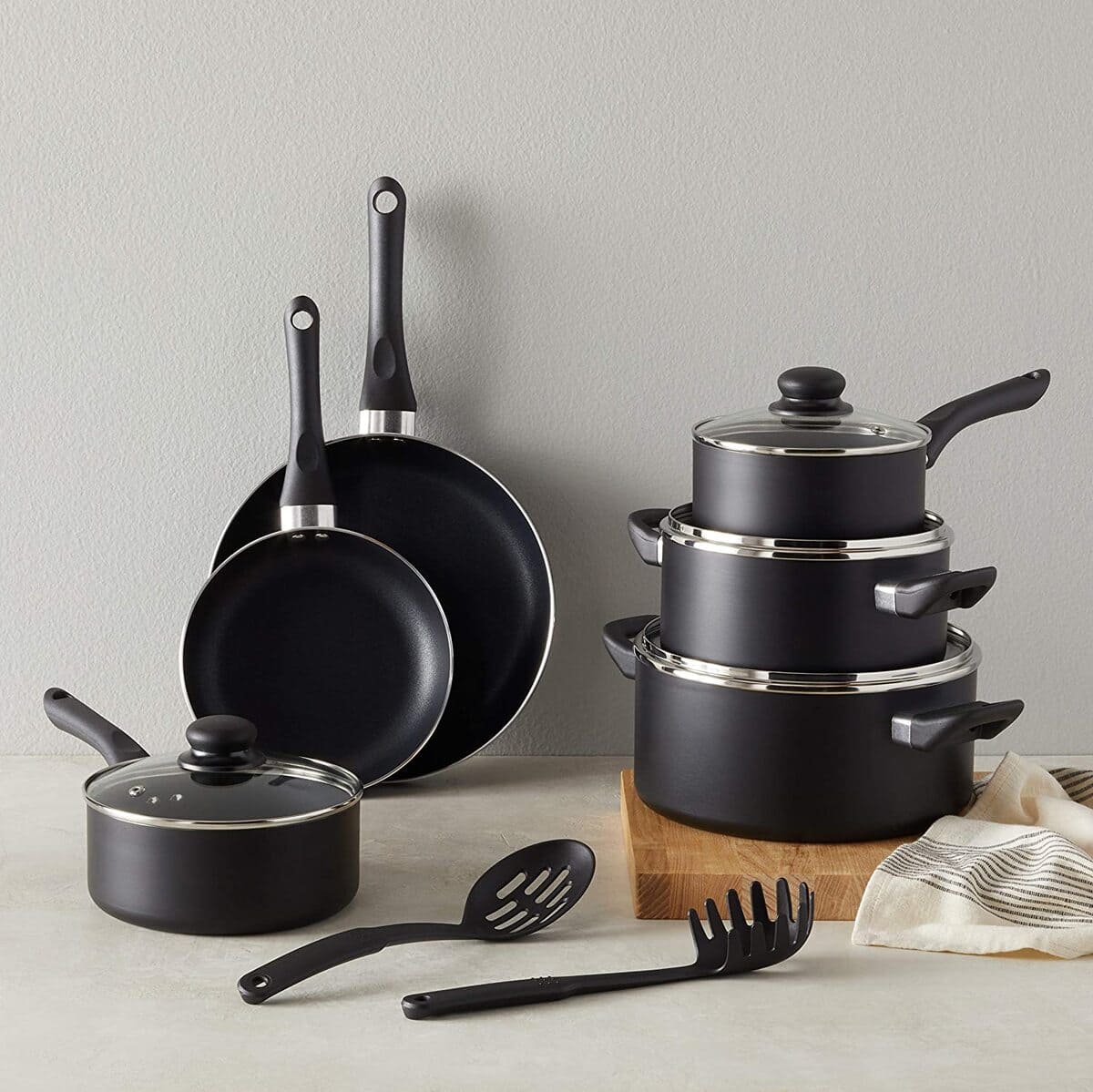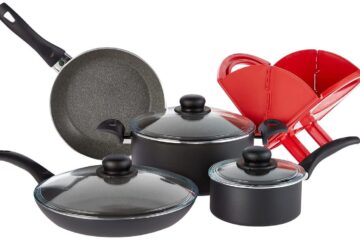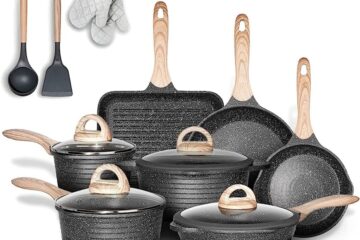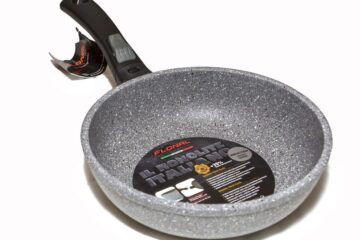Non-stick cookware has become a popular choice in modern kitchens due to its convenience and ease of use. However, concerns have been raised about the safety of non-stick cookware and its potential impact on human health. The question of whether non-stick cookware is harmful to health is a complex one that requires careful consideration of the available evidence.
Some non-stick cookware is made using a chemical called perfluorooctanoic acid (PFOA), which has been linked to a range of health issues, including cancer, thyroid disease, and developmental problems. While PFOA has been phased out of production in the United States, other chemicals used in non-stick cookware, such as perfluorinated compounds (PFCs), are still cause for concern. These chemicals can be released into the air and food during cooking, potentially exposing individuals to harmful toxins. Despite these concerns, many manufacturers claim that non-stick cookware is safe to use as long as it is used correctly and not overheated.
What is Non-Stick Cookware?
Non-stick cookware is a type of kitchen cookware that has a special coating on its surface that prevents food from sticking to it. This coating is usually made of a material called polytetrafluoroethylene (PTFE), also known as Teflon, which is a synthetic fluoropolymer of tetrafluoroethylene. The coating is applied to the surface of the cookware using a process called spray coating.
Non-stick cookware has become increasingly popular over the years because of its convenience and ease of use. It allows for easy cooking and cleaning, as food slides off the surface of the cookware without sticking. This also means that less oil or butter is needed when cooking, making it a healthier option for some.
However, there have been concerns about the safety of non-stick cookware, particularly related to the chemicals used in the coating and their potential impact on health. Some studies have suggested that at high temperatures, the coating can break down and release harmful chemicals, such as perfluorooctanoic acid (PFOA) and perfluorooctanesulfonic acid (PFOS), into the air.
To address these concerns, some manufacturers have started using alternative coatings that do not contain PFOA or PFOS, or have reduced the amount of these chemicals in their products. It is important for consumers to read the labels and product descriptions carefully to understand what materials are used in their non-stick cookware and how to properly use and care for it.
How Non-Stick Cookware Works
Non-stick cookware is a popular choice among home cooks due to its convenience and ease of use. The non-stick coating allows food to slide off the surface of the pan, making cooking and cleaning up a breeze. But how does it work?
Non-stick cookware is typically made from a base material such as aluminum or stainless steel, which is then coated with a layer of polytetrafluoroethylene (PTFE), commonly known as Teflon. PTFE is a synthetic polymer that is highly resistant to heat and chemicals, making it an ideal material for non-stick coatings.
The non-stick coating works by creating a smooth, slippery surface that prevents food from sticking to the pan. The surface of the coating is made up of tiny, raised bumps that create air pockets between the food and the pan. This reduces the surface area of contact between the food and the pan, making it less likely to stick.
When heated, the non-stick coating becomes even more effective at preventing food from sticking. The heat causes the surface of the coating to expand, creating even more air pockets and reducing the surface area of contact between the food and the pan.
It is important to note that non-stick cookware should not be used at high temperatures, as this can cause the coating to break down and release harmful chemicals into the air. Most non-stick cookware is safe for everyday home cooking as long as temperatures do not exceed 500°F (260°C). Cooking at lower temperatures can help keep the risks low.
Potential Health Risks of Non-Stick Cookware
Non-stick cookware is a popular choice for many households due to its convenience and ease of use. However, there are potential health risks associated with the use of non-stick cookware. In this section, we will discuss some of the potential health risks of non-stick cookware.
PFOA and PFAS
Perfluorooctanoic acid (PFOA) and per- and polyfluoroalkyl substances (PFAS) are chemicals used in the production of non-stick cookware. These chemicals have been linked to various health problems, including cancer, thyroid disease, and low birth weight.
While PFOA has been phased out of production in the United States, PFAS are still used in the production of some non-stick cookware. It is important to check the label of your cookware to ensure that it does not contain PFAS.
Toxic Fumes
When non-stick cookware is heated to high temperatures, it can release toxic fumes. These fumes can cause flu-like symptoms in humans and can be fatal to birds. It is important to use non-stick cookware at low to medium temperatures and to ensure that the kitchen is well-ventilated.
Scratches and Peeling
Non-stick cookware can become scratched or peel over time. When this happens, the non-stick coating can flake off and be ingested. While ingesting small flakes of non-stick coating is not dangerous, it is important to replace scratched or peeling cookware to prevent further flaking.
Alternatives to Non-Stick Cookware
When it comes to cookware, non-stick options are popular because they are easy to use and clean. However, concerns have been raised about the potential health risks associated with non-stick coatings. Fortunately, there are many alternatives available that are both safe and effective.
Stainless Steel
Stainless steel is a popular alternative to non-stick cookware. It is durable, scratch-resistant, and can be used for sautéing and browning food. Stainless steel pots and pans are also dishwasher safe, making them easy to clean.
One drawback of stainless steel is that it can be difficult to cook delicate foods, such as fish or eggs, without sticking. However, this can be mitigated by using a small amount of oil or butter in the pan.
Cast Iron
Cast iron cookware is another popular alternative to non-stick options. It is durable, retains heat well, and can be used on the stovetop or in the oven. Cast iron pans also add a unique flavor to food that many people enjoy.
One downside of cast iron is that it requires seasoning before use and should not be cleaned with soap. It is also heavy and can be difficult to handle for some people.
Ceramic
Ceramic cookware is a newer alternative to non-stick options. It is made from natural materials and is free of harmful chemicals. Ceramic pans are also scratch-resistant and can be used on the stovetop or in the oven.
One drawback of ceramic is that it can be more expensive than other alternatives. It also requires special care, such as avoiding high heat and using plastic or wooden utensils to prevent scratching.
Glass
Glass cookware is another safe alternative to non-stick options. It is non-reactive, meaning it will not interact with acidic foods, and can be used in the oven or microwave. Glass pans are also easy to clean and do not require seasoning.
One downside of glass is that it can be fragile and may break or shatter if dropped or exposed to sudden temperature changes. It is also not ideal for stovetop cooking.
Conclusion
In conclusion, the question of whether non-stick cookware is harmful to health remains somewhat controversial. While some studies have suggested that the chemicals used in the production of non-stick coatings may have negative health effects, others have found no significant evidence to support this claim.
It is important to note that the safest way to use non-stick cookware is to follow the cooking and care instructions provided by the manufacturer. This may include avoiding high heat, using only non-abrasive utensils, and avoiding the use of metal utensils which can scratch the surface of the coating.
Consumers who are concerned about the potential health risks of non-stick cookware may wish to consider alternative options such as stainless steel or cast iron cookware. These materials are generally considered safe and do not contain the same potentially harmful chemicals as non-stick coatings.
Ultimately, the decision to use non-stick cookware is a personal one that should be based on an individual’s own research and assessment of the available information. As with any product, it is important to weigh the benefits and potential risks before making a decision.



